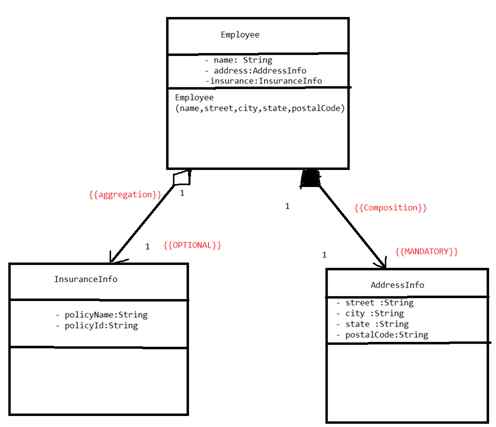
It is an association that represents a part-whole or part-of relationship. The association can specify its cardinality and navigability.Īn aggregation is a kind of the "has-a" association relationship. The association may be specialized as aggregations and compositions that have some differences. It can be depicted as a simple line connector or with decorated ends. The association is a type of relationship in the UML class diagram. Operation format: direction name : type Įach operation parameter can be defined using:ĭirection - it can be input (in), output (out), input-output (inout) or return Operation Parameter is usually an input argument, although it may be also an output or input-output argument.
#Java class diagram example how to
Software Ideas Modeler offers several ways how to add, edit, and delete operations of a class: Static operations are indicated by underline. parameterN) : return_typeĪbstract operations are indicated by italic. Operation format: > visibility_symbol name (parameter1. Operations are defined within an operation compartment (placed after the attribute compartment) of a classifier. Each operation should perform only one thing. Each operation has its name and it can have any number of parameters (zero or more). Operation is a method, function, or query, which can be called by other objects. Software Ideas Modeler offers several ways how to add, edit, and delete attributes of a class: Static attributes are indicated by underline.

Attributes are defined within an attribute compartment (placed after name compartment) of a classifier.Īttribute format: > visibility_symbol name : type = default_value Ībstract attributes are indicated by italic. Each class can have zero or more attributes. UML defines these symbols for the visibility of members (attributes or operations)ĭefines a member that is accessible from the whole project.ĭefines a member that is accessible from the whole package.ĭefines a member that is accessible from the class and its subclasses.ĭefines a member that is accessible only from the class, where it is specified.Īn attribute is a named data field within a classifier, which determines allowed data using its type, multiplicity, and constraints. Visibility determines the scope, in which can be attributes and operations seen and manipulated by other objects. A class that cannot have any instances is called an abstract class. UML Class Diagram Cheat Sheet (Class Diagram Element Overview) ClassĪ class is an extensible template for creating objects, it is a common form for all instances of the same type (e.g.


 0 kommentar(er)
0 kommentar(er)
